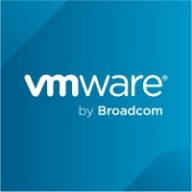

SolarWinds Server and Application Monitor and VMware vCenter are both popular solutions for server and application management. SolarWinds has the upper hand in affordability and customer support, while VMware vCenter is notable for its advanced features and powerful virtualization capabilities.
Features: SolarWinds is valued for its comprehensive monitoring, alerting capabilities, and quick deployment. VMware vCenter impresses with its virtualization features, advanced automation tools, and scalability.
Room for Improvement: SolarWinds could improve in scalability, advanced reporting functionalities, and integration. VMware vCenter users noted the complexity of the system, need for straightforward setup, and intensive resource requirements.
Ease of Deployment and Customer Service: SolarWinds is praised for its quick deployment process and responsive customer service. VMware vCenter's deployment is seen as more complex, though its customer service is well-regarded.
Pricing and ROI: SolarWinds is favored for cost-effectiveness, faster ROI, and lower setup costs. VMware vCenter's higher cost is justified by its extensive features and superior scalability.
| Product | Market Share (%) |
|---|---|
| VMware vCenter | 1.0% |
| SolarWinds Server and Application Monitor | 2.8% |
| Other | 96.2% |


| Company Size | Count |
|---|---|
| Small Business | 16 |
| Midsize Enterprise | 8 |
| Large Enterprise | 20 |
| Company Size | Count |
|---|---|
| Small Business | 15 |
| Midsize Enterprise | 5 |
| Large Enterprise | 18 |
SolarWinds Server & Application Monitor (SAM) delivers powerful application and server monitoring capabilities for IT pros, enabling them to diagnose and troubleshoot performance issues faster. Do not let slow applications and downtime impact your end-users and business services. Pinpoint the root cause of application issues across various layers of the IT stack. SolarWinds SAM is affordable and easy to deploy, use, and customize. You can automatically discover your system's environment and start monitoring in about an hour. No professional services or consultation needed.
VMware vCenter provides centralized management for virtual machines, offering enhanced resource control, high availability, and data protection. Its integration with NSX and vSAN simplifies infrastructure management, although improvements in pricing, licensing, and technical support are needed.
VMware vCenter streamlines the management of virtual infrastructures, facilitating scalability and elasticity through features like DRS, vMotion, and snapshot capabilities. While users appreciate its centralized control and extensive integration options, complexities in interface and upgrades are seen as challenges. Issues like fragmented licensing, difficult Fault Tolerance management, and high resource demands have been highlighted, alongside the need for enhanced security, monitoring, and seamless cloud integration. vCenter is widely used in data centers for overseeing large virtual environments, integrating cloud services, and providing infrastructure as a service.
What are the main features of VMware vCenter?
What benefits and ROI should users expect?
Industries such as IT, finance, healthcare, and government deploy VMware vCenter to manage their extensive virtual environments. Users rely on its automation and centralized management capabilities to ensure high performance and uptime in data center operations, often leveraging it to integrate with cloud services.
We monitor all Server Monitoring reviews to prevent fraudulent reviews and keep review quality high. We do not post reviews by company employees or direct competitors. We validate each review for authenticity via cross-reference with LinkedIn, and personal follow-up with the reviewer when necessary.